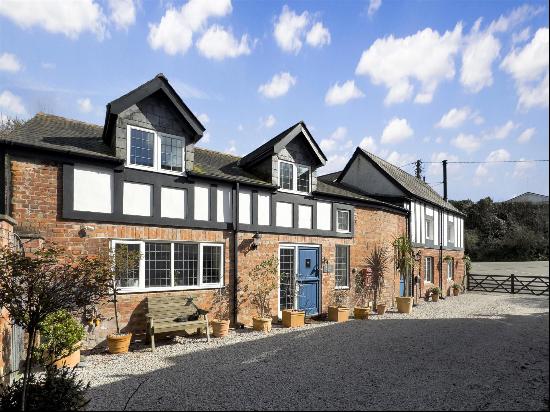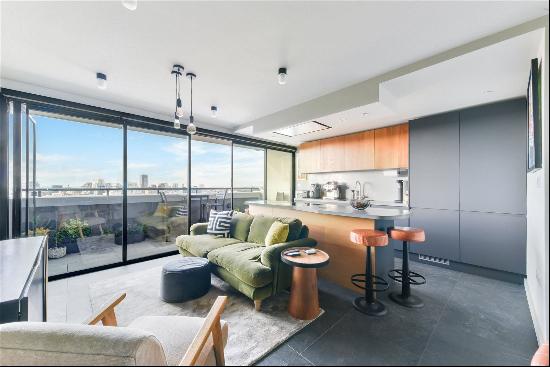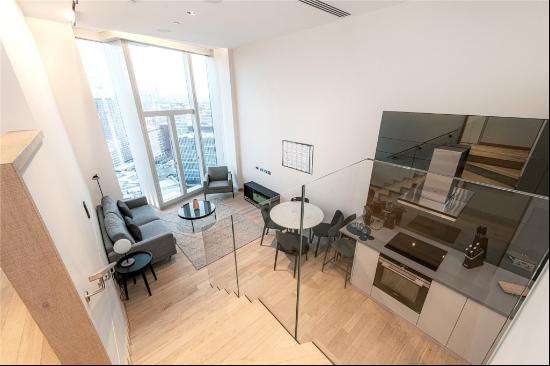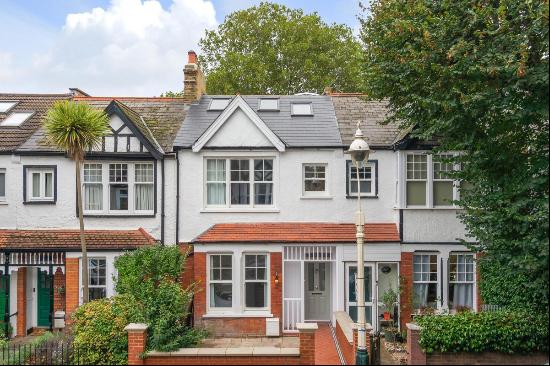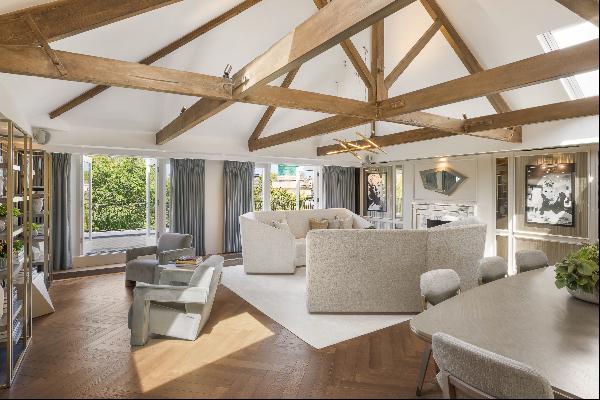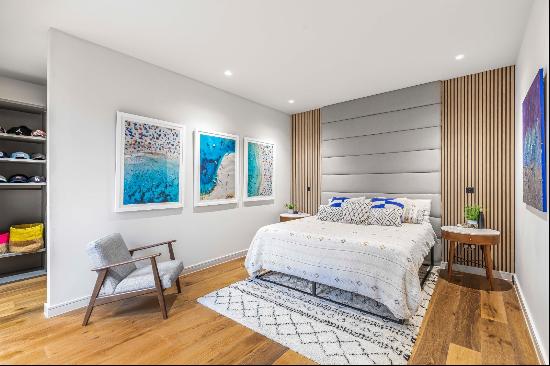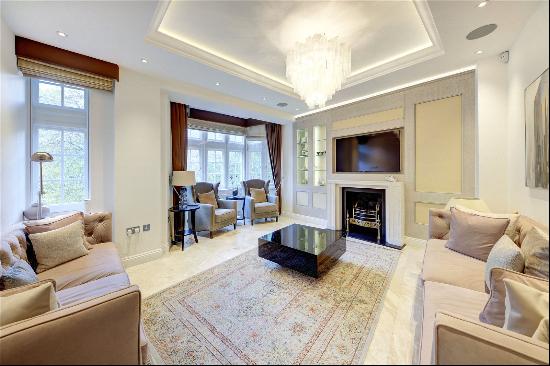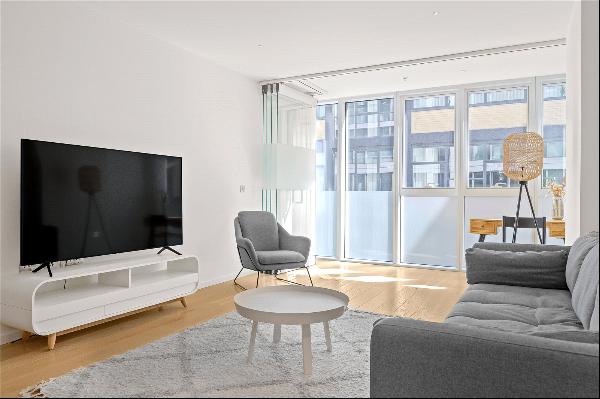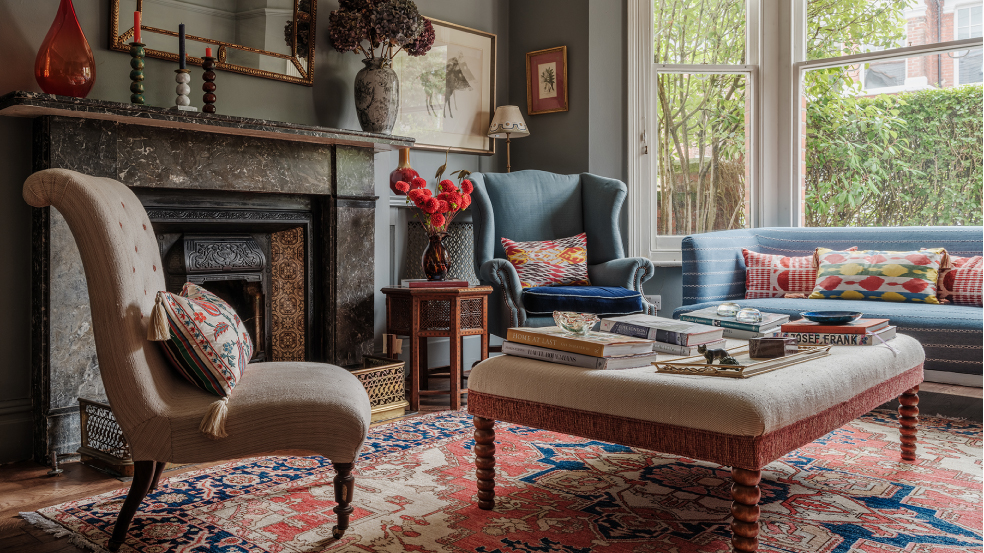
By Anna Haines
Introducing textiles is an easy way to add warmth, character and charm to your home — they take the newness out of a space and help it feel more lived-in. Layering printed fabrics and antique textiles brings in a story and plays a huge part in our emotional response to a room.
Here, I offer my suggestions as to how you might add textiles to a double reception room at this family home in Kensington. With the original hardwood floors and light flooding from the front to the back of the house there are already big advantages.
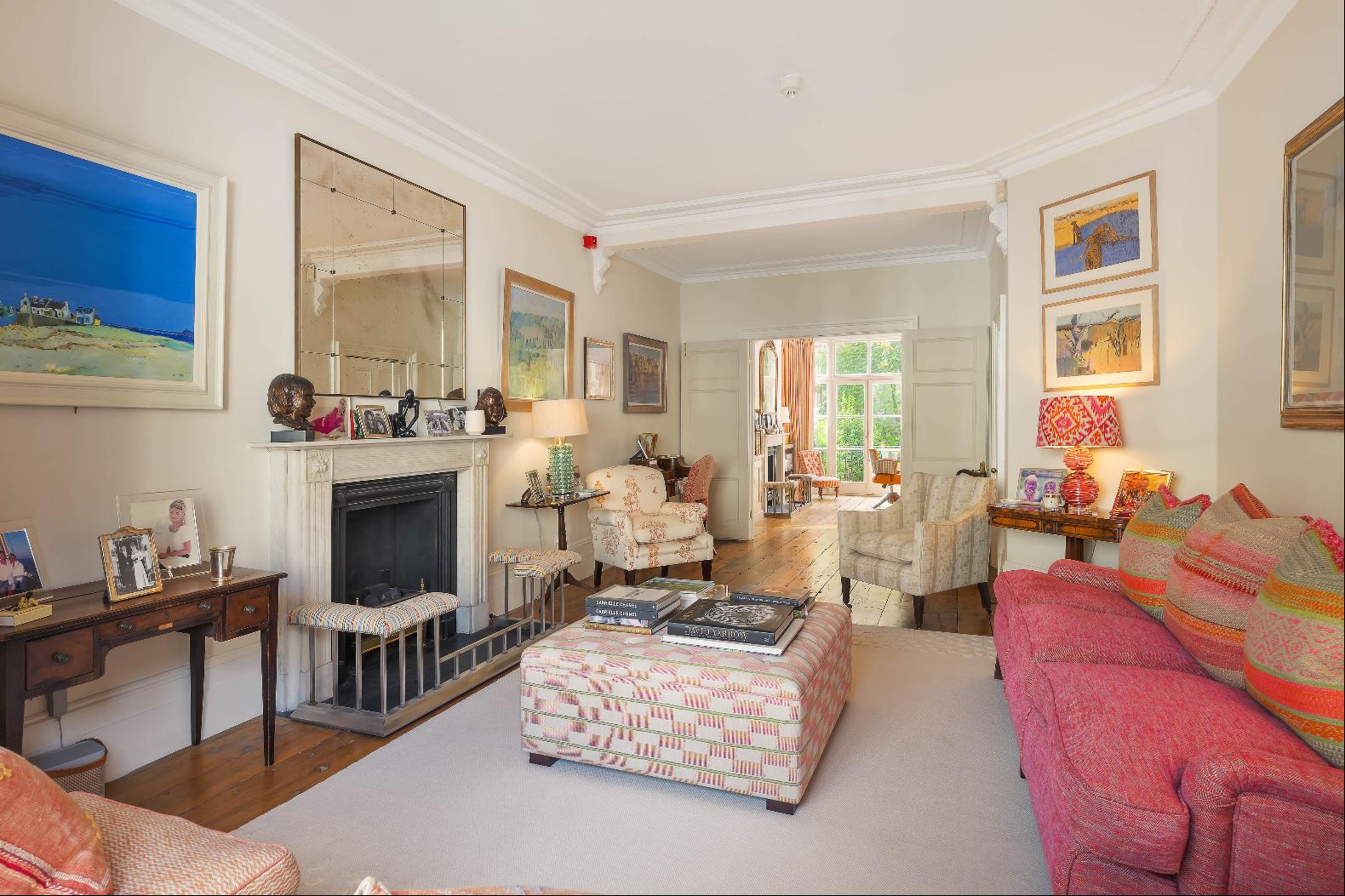
Consider the acoustics
A large room such as this is generous but could feel a little imposing. Fabric walling gives a room a softer acoustic and a tailored finish that looks beautiful and feels comfortable. Using a plain textile on a wall is rather luxurious and with a contrasting trim can bring an element of crispness to a scheme.
I would use Lewis and Wood Oaksey linen in their celestial colourway with Susan Deliss Debo braid in brown (pictured below) for a heightened backdrop. It offers an enticing way of enveloping a space and immediately making you feel at home.
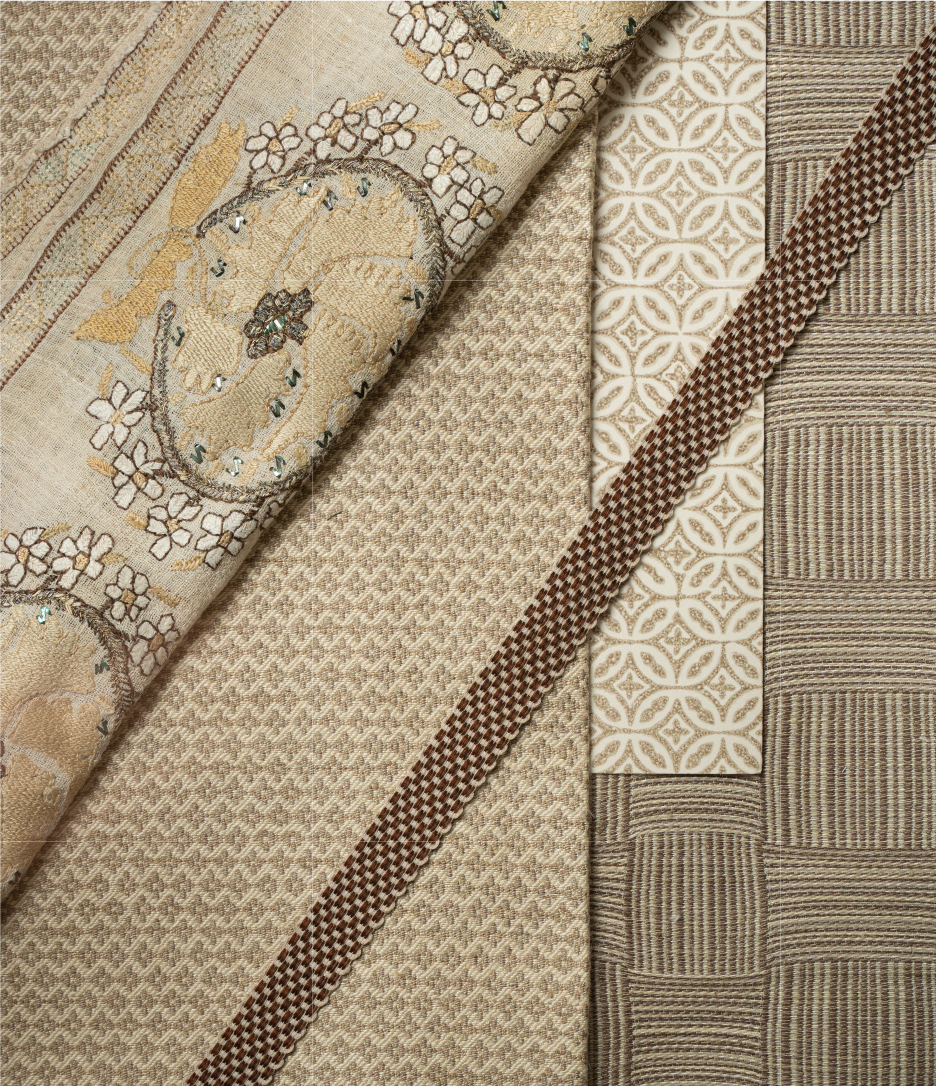
Balancing patterns
I would treat the front reception room as the family television room. Finding the balance between patterns, fabrics and textiles needn’t be overly daunting. A general rule of thumb with patterns is to choose one large-scale design. Complement this with a smaller-scale design and a stripe, both of which pull out the colours from the larger-scale pattern. On top of this, consider adding one or two textured plains such as a bouclé, a cotton velvet or mohair.

Opt for antique fabrics
I often include an antique textile over the back of a sofa, a suzani from Francesca Gentilli for example, or a throw picked up from an antiques fair just to break up the bank of fabric, and to stop the scheme from looking too contrived.

Pick out a centrepiece
I love an upholstered ottoman. It provides extra seating for when you have guests, is a perfect perch for tired feet and can be piled high with books and magazines. The textile used on an ottoman can often be the heart of a scheme and provide the blueprint for the rest of the fabrics. I like to use quite robust materials such as the colourful weave of an antique jajim rug, or a suzani. Though more delicate, they can be strengthened with a backing fabric, and covering them in books and a large tray provides further protection. Consider using the border outline of the textile to determine the overall size of your ottoman. We often use a contrast trim around the base to add more depth.
I think the rear reception room would be well suited as a study-cum-library, a quieter space surrounded by books and their colourful spines, a deep pile Berber rug and a roaring fire.
To this I would add a barrel back wing chair upholstered in vintage Indian quilts, such as this one sourced from Dean Antiques. This could be your centrepiece, much like the ottoman next door.

Do more with less
If you’re working with a smaller piece of fabric, this could be placed on the front of the chair with the sides and back upholstered in a plain wool, for example, which complements the main textile — a good tip for using less of a more expensive fabric.
Like all truly successful decoration, the magic comes from the combination of colour and textiles, and how they are brought together. I tend to work with a fairly matching scheme and then accent it with rather more rogue elements and unexpected surprises, for a warmer, more inviting home. It’s a chance to be bold and have fun.
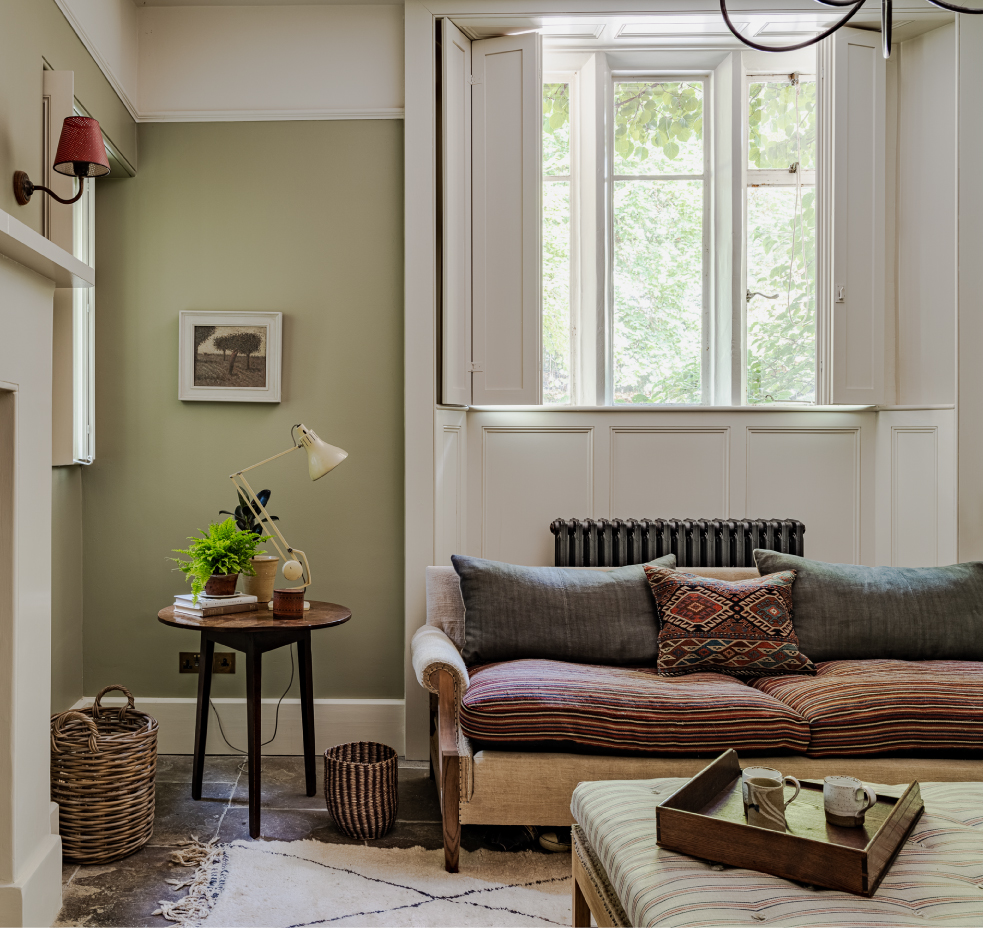
Five-bedroom Kensington house on the market with Knight Frank for £7.9mn.
Photography: Boz Gagovski; Knight Frank; Paul Whitbread



